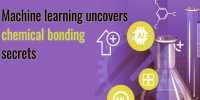Researchers at the University of Adelaide believe that laser detectors can be used instead of relying on dog noses to detect surprisingly rare trace gases for treatment or to detect contamination. Our respiratory diseases can carry symptoms. Some animals with sensitive noses can detect certain cancers in their breath even before the current screening device.
If we want to detect the presence of any molecule in a gas sample today, all options have limitations, PhD student Sarah Solten told IFLScience. Mass spectrometry provides accurate text from small samples but is slow, and requires equipment that is anything but portable. Detectors that rely on chemicals that react with what is being sought do not do a bad job of measuring concentration. Each gas absorbs light at specific wavelengths, so lighting a wide spectrum of light through a sample can detect its contents. We use this technique to determine the composition of the stars and sometimes also to determine the atmosphere of the planet.
Scholten, however, explained that ordinary light from incandescent sources would interfere with itself and prevent the detection of very-low-density specimens.
Scholten and her co-authors, therefore, turned to optical frequency combs, a technology that converts a laser operated at a single frequency into millions of individual frequencies to maintain ultimate spatial consistency, one of the defining characteristics of lasers. The makers of the Frequency Combs shared the 2005 Nobel Prize in Physics.
Scholten announced that his product could detect the concentration of carbon dioxide in gas with an accuracy of 0.04 percent, with his team promising to build an “optical dog nose”, in the journal Physical Review Applied.
To increase the chance of encountering the rare molecules of the lesson, Scholten moves back and forth from the commercial model of an optical frequency comb through a gas. Scholten told IFLScience that the lasers are so consistent that they can hold a reflection through a 10-centimeter (4-inch) sample that has 1.6 kilometers (1 mile) of the path within the laser’s gas.
The team’s goal is to be able to detect substances for the density of each billion parts. Scholten told IFLScience that while they are not there yet, they are looking forward to it soon. She said in a statement, “As it develops further, it opens the door to real-time and cost-effective observations and analyzes conducted by non-specialist operators in the field or in physician surgery.”
In addition to detecting symptoms of respiratory distress in patients, the technology can be used to identify sources of contamination. An identifier can detect molecules that should not be present too far away from the source and can even be so portable that it can detect their path in the discharge, identifying the place of emission.
















